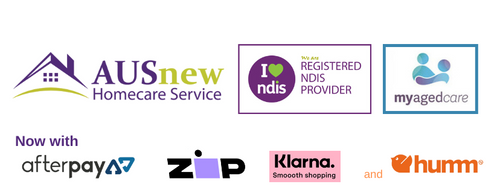Exploring flexible, person-centred housing options beyond traditional NDIS-funded models

Shared living is becoming an increasingly popular option for people with disabilities who want more independence, companionship, and affordability. While Supported Independent Living (SIL) and Specialist Disability Accommodation (SDA) are common terms under the NDIS, not all shared living arrangements fall under these categories. In this blog, we’ll explore what shared living can look like outside of SIL or SDA, who it might suit, and what to consider when exploring this option.
What Are Shared Living Arrangements?

Shared living typically involves two or more people living together in a home while sharing costs and responsibilities such as rent, utilities, and household tasks. These arrangements can be informal or structured and may or may not involve paid support staff. They can include:
-
Co-housing with friends or peers
-
Living with a host family or housemates
-
Renting in a share house with minimal or no formal supports
This setup gives individuals more flexibility in choosing who they live with and how they manage their day-to-day living arrangements.
How Shared Living Differs From SIL and SDA
Supported Independent Living (SIL) is a funded NDIS support that includes help with daily tasks for people who need 24/7 support.
Specialist Disability Accommodation (SDA) is housing specifically designed for people with extreme functional impairment or very high support needs.
Shared living outside SIL or SDA means you’re not necessarily receiving formal, funded supports in the home – or if you are, they are accessed in different ways, such as:
-
Using Core Supports to bring in casual support workers
-
Sharing private support arrangements with housemates
-
Living independently and managing supports externally
This model may suit those with lower support needs, or those who want more control and flexibility over their living environment.
Who Might Benefit From Shared Living Without SIL or SDA?
This arrangement may be ideal for people who:
-
Want to live with peers rather than in formal disability accommodation
-
Have informal supports such as friends, family, or housemates
-
Prefer greater autonomy over their daily routines
-
Are not eligible for SIL or SDA but still want to live in a supportive environment
It's also a good fit for NDIS participants who receive funding through Core Supports and can use that to bring in support as needed – rather than receiving structured, high-level support within the home.
Considerations Before Choosing Shared Living
While shared living can be empowering, there are important considerations:
-
Compatibility with housemates: Shared values, routines, and communication styles are important for long-term harmony.
-
Funding clarity: Make sure you understand what your NDIS plan covers and what costs are your responsibility.
-
Tenancy rights and agreements: Having a clear rental or subletting agreement protects everyone involved.
-
Support arrangements: Plan ahead for how you’ll access support when you need it, especially in emergencies.
Creating Your Own Shared Living Model
If you're considering shared living outside of SIL or SDA, here are some steps to get started:
-
Define your goals – What kind of living environment do you want?
-
Find compatible housemates – Use disability housing platforms or community networks.
-
Understand your budget – Know your income, NDIS funding, and personal expenses.
-
Plan your support – Whether informal or paid, ensure it matches your lifestyle needs.
-
Seek advice – Speak with a Support Coordinator or Local Area Coordinator (LAC) to explore creative housing options.
Final Thoughts
Shared living arrangements outside of SIL and SDA offer people with disabilities greater choice, affordability, and a more typical home life. With the right planning and support, this model can lead to a more inclusive and independent lifestyle. If you're not eligible for SDA or don’t need SIL-level support, shared living might be the empowering alternative you're looking for.
Looking for SDA Accommodation?
We’re here to help. Whether you need support gathering reports, finding providers, or navigating the NDIS system, get in touch with our team. Let’s work together to help you find your perfect home.
Our team At Ausnew Home Care is here to assist you in finding the perfect living arrangement that supports your independence and well-being.
This article is intended for informational purposes and should not replace professional advice. Always consult with your NDIS planner or support coordinator for personalized guidance.





